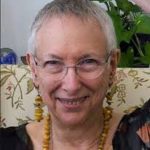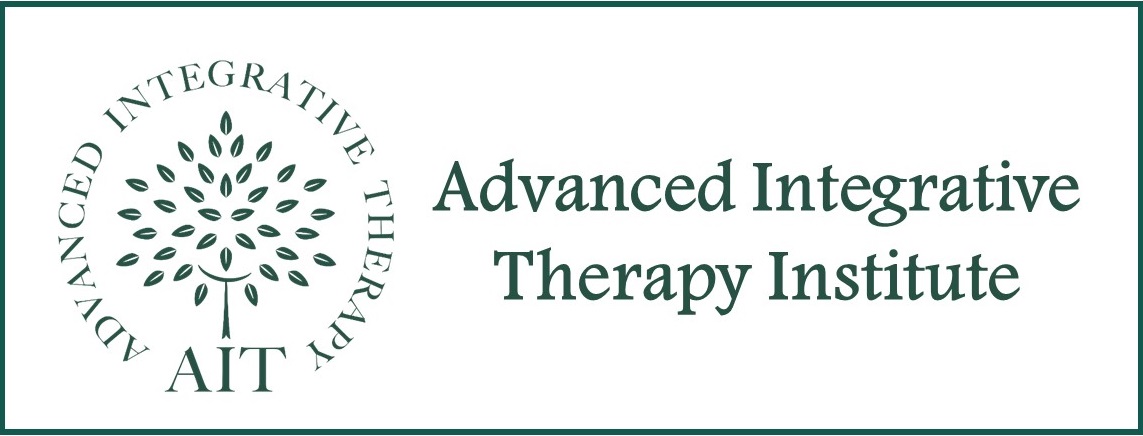INTRODUCTION: HOW AIT CAME TO BE

Asha Clinton, developer of AIT
Every five or six years I would feel that I needed new and better tools to help a particular client–or sometimes more than one—who was really stuck. At that point I usually discovered a promising new therapeutic modality and got trained in it hoping that it would make the difference for my client. Often it did. Among the clients in my practice in 1996 was one wounded soul with Dissociative Identity Disorder, another with Borderline Personality Disorder and a third whom I found easy to diagnose as both narcissistic and sociopathic. It was certainly time to get trained in another new modality.
I called a colleague, the bioenergetic analyst Vivian Guze, because she always seemed to know what was newest and hottest in the field. She told me about Thought Field Therapy. Three days later I was in Boston attending the level 1 training with Greg Nicosia and discovering, as I practiced, that moving energy around and out of my system made an impressive difference in how I felt. I was so impressed that, in what seemed like no time at all, I got trained in the other energy psychology techniques that were emerging at the time: Gary Craig’s Emotional Freedom Technique; Tapas Fleming’s Tapas Acupressure Technique; Larry Nims’ Be Set Free Fast; and Fred Gallo’s EdxTM.

I took each of these new methods home realizing that, because they were basically energy TECHNIQUES, I would have to find ways of synthesizing them with the methods I was already using. I used them extensively on myself and, later, on many clients; I wanted to understand their benefits and limitations. What I discovered was what I had hoped for, that no matter what the client’s diagnosis was, the new techniques removed post-traumatic emotions and physical sensations very handily, and without the client regressing or dissociating, Moving post-traumatic energy directly was clearly a valuable method.
The problem, from my point of view, was that each of them was a technique and not a psychotherapy. People who were getting trained in them were indeed trying to interpolate them into their extant way of treating clients. It was as if each clinician was inventing their own new therapy. Some, of course, did a better job of it than others. Also, many people who were untrained in psychotherapy were learning these techniques, and had no theoretical framework within which to use them. In the face of such chaos, what I wanted was to be trained in a new therapeutic modality that featured the focused use of energy movement as its primary method, and that was solidly based on the psychodynamic, cognitive, behavioral, and other psychotherapeutic approaches that seemed useful and necessary. I told colleagues that I was waiting for the first training in such a new therapy, and that I’d happily be among the first to sign up.

On a blustery Sunday morning in March, 1998, I lay soaking in the tub recovering from the rigors of a large and challenging therapy practice, a young, and curious daughter who wanted to understand everything yesterday, an intense and loving marriage, and a developing spiritual path. Strongly influenced by the emerging feminism of the ‘60’s and ‘70’s, I had decided early on that I wanted it all and was trying to have it all. In other words, I was totally exhausted.
I lay alternately dozing and reading Tony Hillerman’s Dance Hall of the Dead. I checked the clock and saw that I had time for one last snooze before I faced the day. When I woke up from that snooze, the last one for many years, the structure of a new psychotherapy was clear in my mind. I knew exactly what it was: the new method I had hoped someone would train me in soon. Afraid I would lose it, I jumped out of the tub and ran downstairs to my computer to write it down before it disappeared into menopausal fog. Just as I was about to turn the computer on, I realized that I was soaking wet, and that we had houseguests; I could hear them talking with my husband in the living room. I ran back upstairs repeating to myself exactly what I was seeing internally so I would not forget it. I quickly toweled off, dressed, returned to the computer and turned it on.
A fresh file open in front of me, I closed my eyes to better remember, and my fingers started typing what turned out to be a general description of the new modality and, then, the first of more than one hundred treatment protocols: The Core Belief Protocol, which lastingly transforms negative cognitions into positive, realistic ones. As surprising as the morning had been so far, having my fingers type without my controlling them was a real shock. After all, I was a social scientist! True, the grammar, organization, and writing style were nothing to write home about, but someone or something was writing through me! Although it felt scary and confusing, I couldn’t wait to see what would happen next.

My life took a totally different and unexpected turn as a result of that March morning’s events. Whenever a new protocol or piece of theory was about to surface, I felt pressure in my chest. I soon learned that when I felt it, I needed to sit at the computer so that “dictation” would occur. It is now nineteen years later, and that pressure still occasionally occurs. Once the new materials are on my computer, my ego takes over and does the editing, turning what is often a disorganized mess into something that flows logically. Fourteen manuals and seminars have emerged from this process and, in addition, two more manuals and seminars developed by Tony Roffers, PhD.
The name of the modality has changed a few times. It began as Matrix Work, because the Core Belief Protocol was quickly followed by long lists of negative cognitions paired with their positive, realistic alternatives; I named these lists Matrices. Then, when I became aware of the spiritual aspects of the modality, I renamed it Tara Work after the Tibetan Tutilary Deity Tara, the goddess of compassion. When there turned out to be too many other organizations with that name, I looked for a less well known spiritual name and chose Seemorg Matrix Work. Seemorg is the name of a bird that symbolizes God in the gorgeous Persian medieval spiritual poem, The Conference of the Birds. I put this together with the word, matrix because, by the time I was thinking about how to change this name as well, the work had well over 125 Core Belief Matrices.
When I finally consulted a marketer, the feedback he gave me was to choose a less unusual name; Few people in the West, he argued, know about the Simorgh (the usual way to spell it in English translation). He asked me to characterize the new modality and name it accordingly. My first thought was that offered ways to use the focused movement of energy that the techniques did not, hence, Advanced. Next, I felt that this work was more integrative than any I knew of, since it integrates a variety of therapeutic modalities– hence Integrative. Finally, I felt it could no longer be called a psychotherapy because it integrated and treated body, psyche, and spirit– hence Therapy: Advanced Integrative Therapy.

At this point over two thousand clinicians have been trained in it in twelve countries. Most important, AIT treatment has helped many people stop suffering from the accumulated traumas of their past. If they suffer now, it is primarily because of what is happening in their present—for most of us a far smaller burden to carry.
The source of AIT has been very responsive to my continuing need to learn newer and better ways to treat my clients and their physical, psychological and spiritual issues. Each new body of theory and method seemed to come into being when I needed it to help treat particular clients with particular issues. In the last few years, for example, I have been confronted by the fact that more of my clients are developing serious illnesses and physical disorders than before, and that they usually want me to treat them with AIT. I have been challenged in this way with Parkinson’s Disease, a number of different cancers, Thyroid dysfunction, ulcerative colitis and Crohn’s disease, and more. The result is that AIT has a new group of methods to treat infectious diseases, auto-immune disorders and, most recently, cancer.
It began in the bathtub. My prayer is that it will always exist to help people transform their suffering into peace, joy, and contentment. So many of us have really suffered enough.

